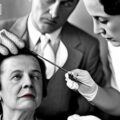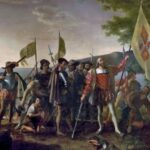The lightbulb is one of the most revolutionary inventions that has ever graced humanity. Its humble beginnings can be traced back to the predecessors of the modern-day lightbulb. In this blog post, we will delve into the history of the lightbulb, unraveling its origins and witnessing how it evolved into the practical invention we know today. We will pay special attention to the brilliant mind behind its practicality, Thomas Edison, whose relentless efforts brought about a significant transformation in the way we illuminate the world. Brace yourself for an illuminating journey into the captivating story of the lightbulb.
The Predecessors Of The Lightbulb
The invention of the lightbulb is often attributed to Thomas Edison. While it is true that Edison played a significant role in the development of practical electric lighting, the lightbulb itself was not his original creation. In fact, numerous inventors and scientists made valuable contributions to the development of early forms of electric lighting before Edison’s breakthrough.
The Early Pioneers Before the invention of the lightbulb as we know it today, several inventors experimented with different types of electric lamps. One of the earliest pioneers in this field was Sir Humphry Davy, an English chemist. In 1809, Davy demonstrated an electric arc lamp, which used an electric current to produce light by creating an arc between two carbon rods. Although this invention was a major milestone in the history of electric lighting, it was not practical for everyday use due to its high energy consumption and limited lifespan.
The Geissler Tube Another important precursor to the modern lightbulb was the Geissler tube, developed by German glassblower and physicist Heinrich Geissler. In the mid-19th century, Geissler created a sealed glass tube that contained a partial vacuum and was filled with various gases. When an electric current was passed through the tube, it produced a glowing effect, demonstrating the phenomenon of electric discharge. While the Geissler tube was not a practical source of illumination, it laid the foundation for the development of fluorescent lighting and other types of gas-discharge lamps in the future.
| Inventor | Contribution |
|---|---|
| Sir Humphry Davy | Demonstrated the electric arc lamp |
| Heinrich Geissler | Invented the Geissler tube |
| Warren de la Rue | Developed a high-resistance carbon filament lamp |
| Joseph Swan | Patented a practical incandescent lamp |
The development of the lightbulb was a cumulative process, with each inventor building upon the achievements of those who came before them. While Edison successfully created a long-lasting and commercially viable incandescent lightbulb in the late 19th century, it is important to recognize the contributions made by the predecessors who paved the way for this revolutionary invention.
Thomas Edison: The Inventor Of The Practical Lightbulb
Thomas Edison, an American inventor and businessman, is accredited with inventing the practical lightbulb. His contribution to the field of electricity and lighting revolutionized the way we illuminate our lives. Prior to Edison’s invention, various predecessors had made significant advancements in the development of the lightbulb. However, it was Edison’s determination and relentless pursuit of a commercially viable solution that ultimately led to the invention of the practical lightbulb.
Before Edison’s breakthrough, inventors like Sir Humphry Davy, Warren de la Rue, and Joseph Swan had made significant advancements in electric lighting. Sir Humphry Davy first demonstrated the electric arc lamp in the early 1800s, which provided bright but intense and non-continuous light. Warren de la Rue later improved upon this concept by creating a lightbulb using a coiled filament made of platinum. However, the high cost and short lifespan of the platinum filament limited its practicality for widespread adoption.
It was Thomas Edison’s persistence and innovative thinking that eventually led to the successful invention of the practical lightbulb. Edison experimented with various materials and methods to find a long-lasting and cost-effective solution. In 1879, he discovered that a carbonized bamboo filament could provide a reliable source of light without burning out quickly. This breakthrough allowed for the commercial production and distribution of electric lightbulbs for the first time.












